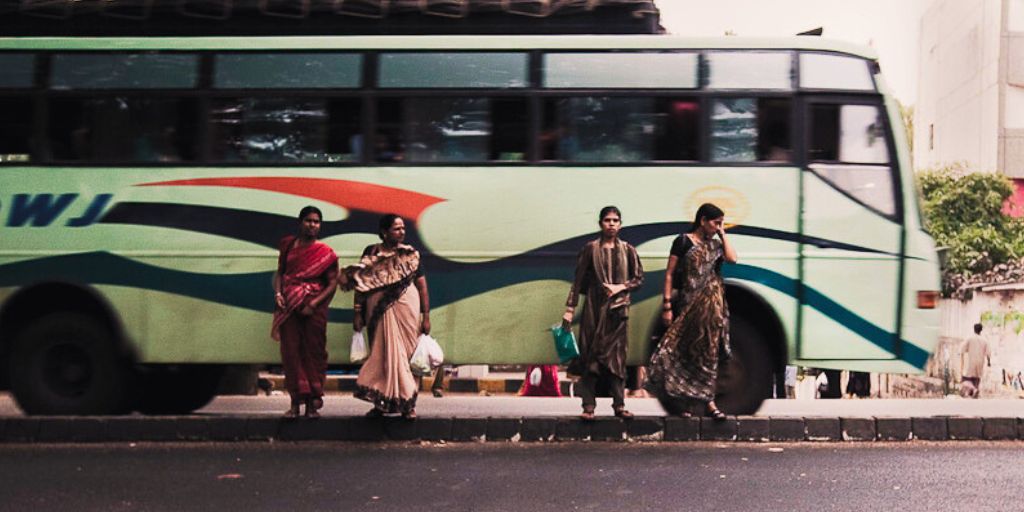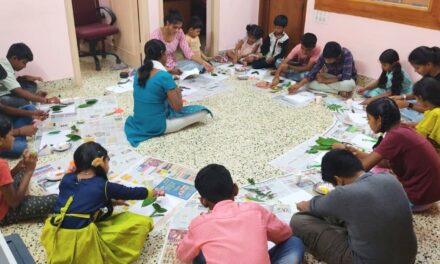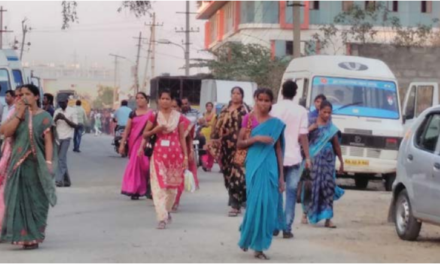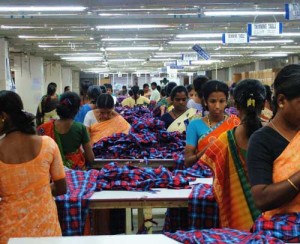Lack of Connectivity & Frequency Prevent Many From Using Govt-Sponsored Shakti Scheme, Which Is A Money-Saver For Low-Wage Workers
Leela is happy these days because she gets to make a tiny saving, thanks to a seemingly simple social welfare measure – free bus travel. “I am happy that I don’t have to spend money on travel,” says this garment worker. Leela, who has a 10-km daily commute from Makali in north Bengaluru to a factory on Tumkur Road, now hopes to save Rs 1,050 from her monthly salary of Rs 12,000.
Shakti scheme, which was recently introduced in Karnataka, offers free travel to women in non-premium state-operated buses. However, Leela seems to be an exception. Several workers told Cividep’s field team that they are unable to use the facility due to lack of last-mile connectivity. Take the case of Asha, who has a 12-km commute from Thotadagudanahalli to her factory in Peenya and back. “We don’t have reliable bus service to my area. Buses are not there when we need them,” says Asha. Instead, she uses the factory shuttle, which is convenient and accessible. This, however, costs Rs 250, which she can ill-afford on a monthly salary of Rs 10,000.
Many workers stay in rented accommodation close to the factories. “We don’t use buses much as our homes are nearby the factory (2-2.5 kms) and it takes us 15 minutes by walk,” says garment worker Lakshmi, and her colleagues nod in agreement. She stays in Goraguntepalya in Peenya, one of Bengaluru’s major industrial areas. Her decision to walk is also due to necessity as government buses do not ply to interior parts of most city localities.
Infrequent Services In The Outskirts
Connectivity issue is more acute for those in Bengaluru’s outskirts and rural districts neighbouring the city. “There are only two buses per day (morning and evening) to my village Sirugammanadoddi. Most of the time I travel by share auto; and so do many garment workers to reach Kanakapura that has many factories,” says Jayalakshmi, a field officer with Samruddhi, one of Cividep’s partner organisations.
Workers mostly use factory-run buses that pick them up from their villages to reach Kanakapura, a town with a big cluster of garment factories. Though convenient, the option is expensive as it costs Rs 1,000-1,300 every month, depending on the distance.
‘Increase Frequency
Despite the issues, the scheme has received a tremendous response since its rollout less than a month ago. The Bengaluru Metropolitan Transport Corporation (BMTC) has reported a record-breaking number of female commuters in the first few weeks itself. But this has also led to more pressure on the existing services.
Jayalakshmi says there is overcrowding and this may be causing wariness towards female commuters. “Some conductors now speak rudely with women as they blame them for the buses getting crowded. Also, if drivers see only women at bus stops, they don’t halt sometimes.” In response to such problems, there is public demand to increase the number of services. A garment union leader suggests that the BMTC run mini-buses to areas where garment workers reside to provide better connectivity.
Powering Female Workforce
There are 950 garment factories located in 23 districts of Karnataka. Most of these factories are located in Bengaluru Urban (766) and Bengaluru Rural (35) districts, and they employ more than 5 lakh workers of whom more than 80% are women. Karnataka also has the highest number of factory workers in the garment sector.
Given the significant female workforce, the Shakti scheme’s impact among garment workers may provide a true test of its success in enabling women’s mobility and labour-force participation. Moreover, low-wage workers stand to benefit the most from the money saved on transport. Garment worker Leela, a beneficiary of the Skakti scheme, often cuts back on essentials to make ends meet. The savings on transport offer her some respite. “I can use the money to buy fruits, vegetables, milk, and take care of other home expenses,” she says.
(Inputs: Preethi Gowda)





